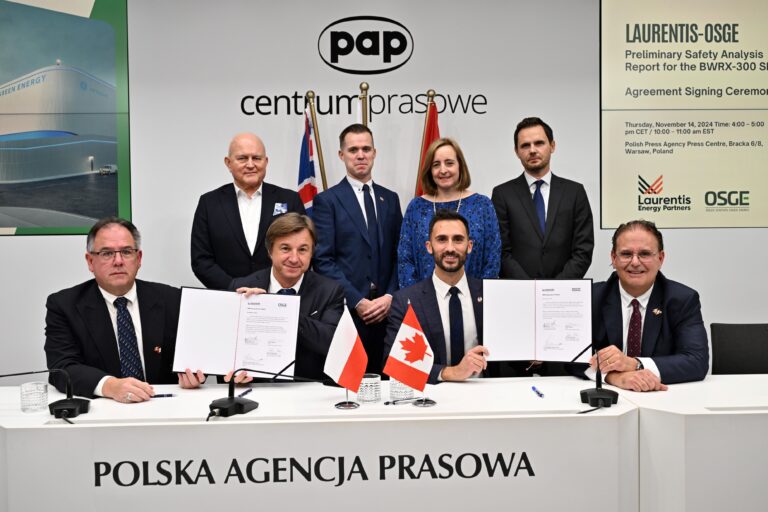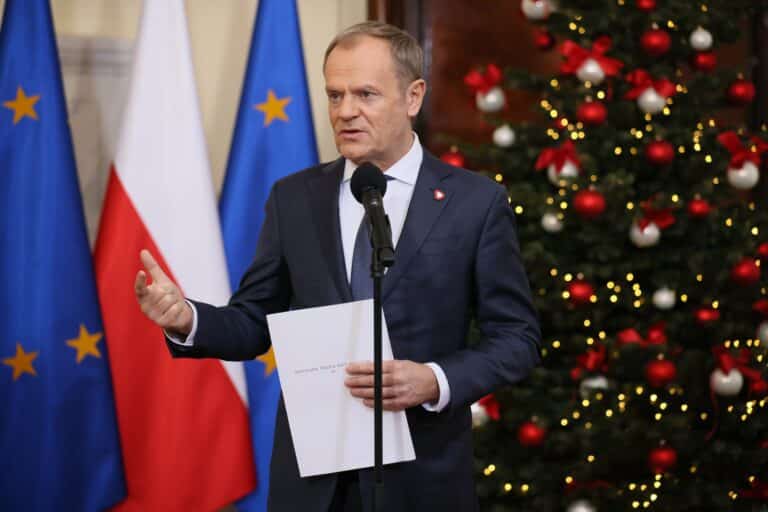Returning to growth as normal?
Bank Millennium believes the Polish economy will gradually recover this year, driven by stronger consumer sentiment.
Economic growth at 2.9% with an upward outlook, which will be driven primarily by resurgent private consumption, a reduction in average annual inflation to just over 5%, and possible interest rate cuts of 50-75 bps – are Bank Millennium’s key economic forecasts for 2024.
“This will be a period of rebalancing the economy, but this process will not be fully successful in all aspects,” according to the bank’s chief economist Grzegorz Maliszewski.
There are several events on the horizon that will strongly influence markets and investors.
“In 2024, the Polish economy will be moving towards equilibrium, understood on various levels: lowering of inflation from very high to moderate levels, acceleration of economic growth and interest rate cuts. However, this will only be the beginning of the road, this equilibrium in some aspects will probably not be achieved this year. An example is inflation, which has the potential to go down, but will not reach the central bank’s target, and this is a neutral level for the economy. Interest rates will be lowered, but gradually, so they will still be at a higher level than before the pandemic broke out,” says Maliszewski.
“Where we will get to in the recovery process is still fraught with great uncertainty, as there are many factors that could disrupt the process, such as the geopolitical situation or the results of the US elections,” he adds.
The expert estimates that the main driver of the Polish economy in 2024 will be private consumption. In January this year, the consumer mood of Polish households improved: the current consumer confidence index rose to -12.6 points from -15.2 points in December. Meanwhile, the leading index improved to -3.8 points from the previous -6.4 points. The survey results also indicate that households expect the country’s economic situation to improve, while expressing less concern about unemployment. This information bodes well for household spending in 2024.
“The income situation of households will be good, and wages will likely continue to grow at a double-digit rate. This growth rate will slow down a bit, but it will still be high, due to, among other things, a roughly 20% increase in the minimum wage, as well as announced increases in the budget sphere and for teachers. This will be compounded by an increase in social benefits, so household incomes will nominally rise. Their purchasing power will improve, as falling inflation will mean they will have more money for consumption,” says Maliszewski.
Average monthly wages and salaries in the corporate sector rose by 9.6% year-on-year in December, slightly slower than the month before (11.8% year-on-year). This means that December was the first month in almost two years in which annual wage growth declined to single digits. Despite this, the average wage still exceeded the PLN 8,000 gross level for the first time in history, confirming continued high wage pressure despite falling inflation. Analysts also forecast that despite the strong increase in the minimum wage in 2024, the level of unemployment will not change significantly (the registered unemployment rate ended 2023 at 5.1%, close to the lowest ever), and the situation in the labor market will be stable.
According to forecasts by Bank Millennium’s Bureau of Macroeconomic Analysis, economic growth in 2024 will accelerate to 2.9% and risks to this forecast are directed upward. However, a factor that could weaken it is the difficult economic situation in Germany, which is Poland’s main trading partner.
“Germany was in recession in 2023. Current forecasts show that GDP growth will be positive in the current year, but the scenario of Germany going into recession for the second year in a row cannot be completely ruled out. And this is unfavorable from the point of view of Polish companies and exporters. So the revival of consumer demand will be tempered by weaker external demand,” explains Bank Millennium’s chief economist.
In January this year. The ZEW Index, which depicts analysts’ expectations for the German economy, rose to 15.2 points from 12.8 points last December, better than expectations and the highest since February 2023, which is part of a picture of gradual improvement in sentiment in Germany and the eurozone as a whole. The composite PMI for the eurozone as a whole, which shows sentiment in manufacturing and services combined, rose to 47.9 points in January this year. Although this is still below the neutral 50-point level separating recovery from slowdown, the index value is the highest in six months.
According to economists, this confirms that the eurozone economy has already passed the bottom of the business cycle, although it is difficult to speak of a return to recovery. The Eurozone’s business climate remains weak, helped by subdued demand, suffering from elevated inflation and high interest rates.
Analysts predict that in such conditions the ECB will not be in a hurry to start cutting interest rates. In Poland, too, there will be no significant room for monetary easing this year. According to Maliszewski, the NBP may cut interest rates by 50-75 bps in 2024. However, they will not return to pre-pandemic levels until at least 2026.
“The zloty – after a very good second half of last year, when it was the best performing currency among emerging markets – in my opinion also has the potential to strengthen this year, although this space is already much smaller. This is due to the fact that many of the positive factors that could affect the Polish currency this year have already been taken into account by the markets. These factors include, for example, just the tightening of the narrative by the NBP and a smaller scale of interest rate cuts than it seemed just a few months ago,” says Bank Millennium’s chief economist.
Last year, the strengthening of the zloty was influenced by the very positive reaction of the markets to the results of the recent parliamentary elections and the warming of relations with the EU, as this increases the possibility of EU funds flowing to Poland. Its image in the eyes of foreign investors has also improved. These factors have also already been largely priced in by the markets.
“We expect the EUR/PLN exchange rate to fall to around 4.27 by the end of this year, so compared to last year this is a smaller scale of potential appreciation. On the other hand, we are aware that on this path of strengthening we will also have episodes of large fluctuations, as there are some risk factors that will affect market sentiment. These include the timing and scale of interest rate cuts by the major central banks, namely the Fed and the ECB. How the US election ends will also cause high market volatility in the second half of this year. We also have an uncertain geopolitical situation,” says Maliszewski.







